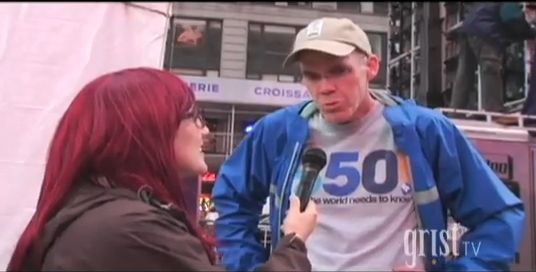California’s state budget gap was about $40 billion this year. New York’s some $50 billion. Every state in the Union is struggling with drastically lower revenues and higher costs for services of every kind, washing state capitals with red ink. At the polls next year, governors who are facing elections – – including Governor David Paterson of New York – – may find themselves politically drowned by such gargantuan deficits.
So, faced with closing schools, hospitals, fire stations, and kicking struggling families off of welfare roles, governors are turning instead, like the famous bank robber Willy Sutton, to wherever the money may be. In New York’s case, at least some of it is hidden in a carbon piggy bank.
Late last year, ten northeastern states started a cap-and-trade system covering carbon emissions from powerplants. Each facility must buy its initial “allowances” for whatever they emit from the state, generating hundreds of millions of dollars in revenues. Each state decides how to spend this money, but generally they have committed it to energy efficiency programs.
That’s where Paterson took a bold gamble. He proposed using $90 million of the state’s $202 million in carbon allowance revenues this year to subsidize the state’s budget deficit. Many criticized the move, fearing that environmental and energy efficiency goals won’t be met and that other states might copy the move, making matters worse. That may also cost the Governor some “green” friends, hurting his chances at the polls next year.
But maybe he did New Yorkers – – and the rest of us – – a real favor. First of all, more than half the carbon money still goes to energy investments. For example, Paterson recently announced a buy-back program for inefficient old appliances. That will save lots of energy as people trade up for newer energy-efficient models, stimulating the economy at the same time, just as the “cash for clunkers” program helped car dealers.
Of course Paterson could have proposed higher taxes instead of raiding the carbon piggy bank. But is it a good idea to tax workers and businesses more, penalizing hard work, or is it better to essentially tax waste and thereby encourage conservation? Many have suggested this very idea as a way to deal with climate change – – tax carbon polluters, which raises the cost of electricity and gasoline – – but lower taxes on payrolls and businesses. Such a zero-sum “tax shift”, it is argued, would reward hard work and discourage wasteful use of energy, both worthy outcomes. In any case, it would force users of energy to pay the true cost of their supply – – a cost, measured in climate change impacts, that is borne today by everyone regardless of how much energy they use.
Climate activists’ immediate reaction to Paterson’s move was negative, but perhaps it’s worth another look. If governors everywhere knew there was carbon piggy bank in their state, we might soon see more support for carbon cap-and-trade systems and quickly earn bi-partisan support for tackling climate change. Given that Congress is stalled on climate legislation, this may be one of our best bets for an American contribution to a global deal in Copenhagen later this year. If that happens, we will have Governor Paterson to thank for being bold enough to get us started.


